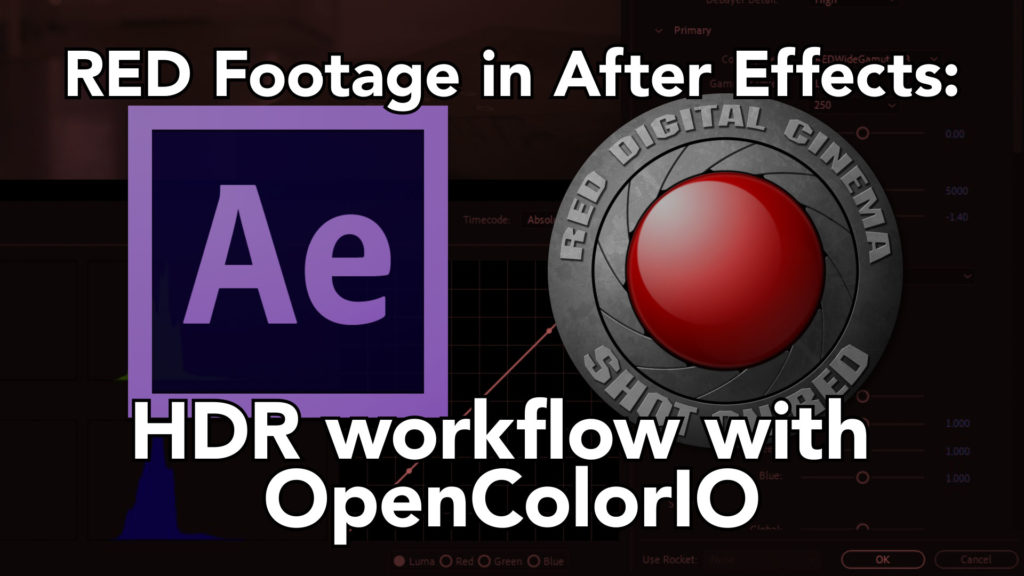I see RED I see RED I see RED…
After Effects has been able to import native .R3D files since 2008, but there are two problems facing After Effects users who work with RED footage. Firstly, and probably the most pressing, is that a few months ago RED changed the default colorspace settings for footage imported into After Effects and Premiere. This means that importing a RED file into the current version of After Effects (CC 2020) will result in an image that looks very different to how it does in any earlier version of AE, right back to CS 4. To put it simply – if you’ve been happily using RED footage in After Effects for the past 10 years, then you’ll be in for a surprise. Unfortunately for AE users, I’m guessing this will not be the good type of surprise…
The change to default settings was only introduced recently, in the January 2021 update to CC 2020, so that particular problem is only a few months old – I’m not sure if many people have noticed yet. But there’s always been another problem facing AE users who want to make the most of their R3D files. RED cameras are high end, Hollywood level devices that carry a premium price tag, and they capture an image with a much greater latitude than regular HD video. They don’t just have a greater exposure latitude than conventional HD video, they capture a much wider color gamut as well. However it’s not immediately obvious how to access all of this extra image detail within After Effects. Right now, there’s no way to work with the REDWideGamutRGB colorspace, or Log3G10 gamma, using native After Effects tools.
Although the average After Effects user mightn’t be interested in HDR video or floating point projects, I’m pretty sure that they’ll notice when the default behavior for imported footage is a colorspace that After Effects can’t actually use by itself. Hopefully this will be addressed in a future update to After Effects, but hoping doesn’t help us right now.
In this video I’ll be addressing both of these issues. I’ll demonstrate what’s changed with the way R3D files are imported into After Effects, and I’ll show how to set up After Effects to take full advantage of the latitude and wide color gamut that R3D files have.
OpenColorIO – The free, open source solution
The video demonstrates the OpenColorIO plugin, which is a free, open source effect adapted for After Effects by fnord software. The latest version of OpenColorIO was updated just a few days ago, and at the time of writing is up to version 2.0. The very latest update is now able to invert 3D LUTs, which will make the people who understand what that means very excited. You can download the plugin here, or alternatively just click on the After Effects icon at the official OpenColorIO website.
Before you can use the plugin, you’ll also need to download a set of config files. These are cross-platform files maintained on the Github site, and you can download them here.
Thanks again to Brendan Bolles of fnord, for all the work in adapting OpenColorIO for After Effects and making it freely available.
And if you’ve found this interesting, please check out my other After Effects articles.
PS. Eagle-eyed pedants will notice that I have my After Effects project set to 16 bit mode when demonstrating how RED files don’t come into After Effects with high dynamic range values. Because 16 bit projects aren’t HDR, then you wouldn’t expect to see HDR values anyway. But trust me – even if my project was set to 32 bit floating point, nothing would be different.


